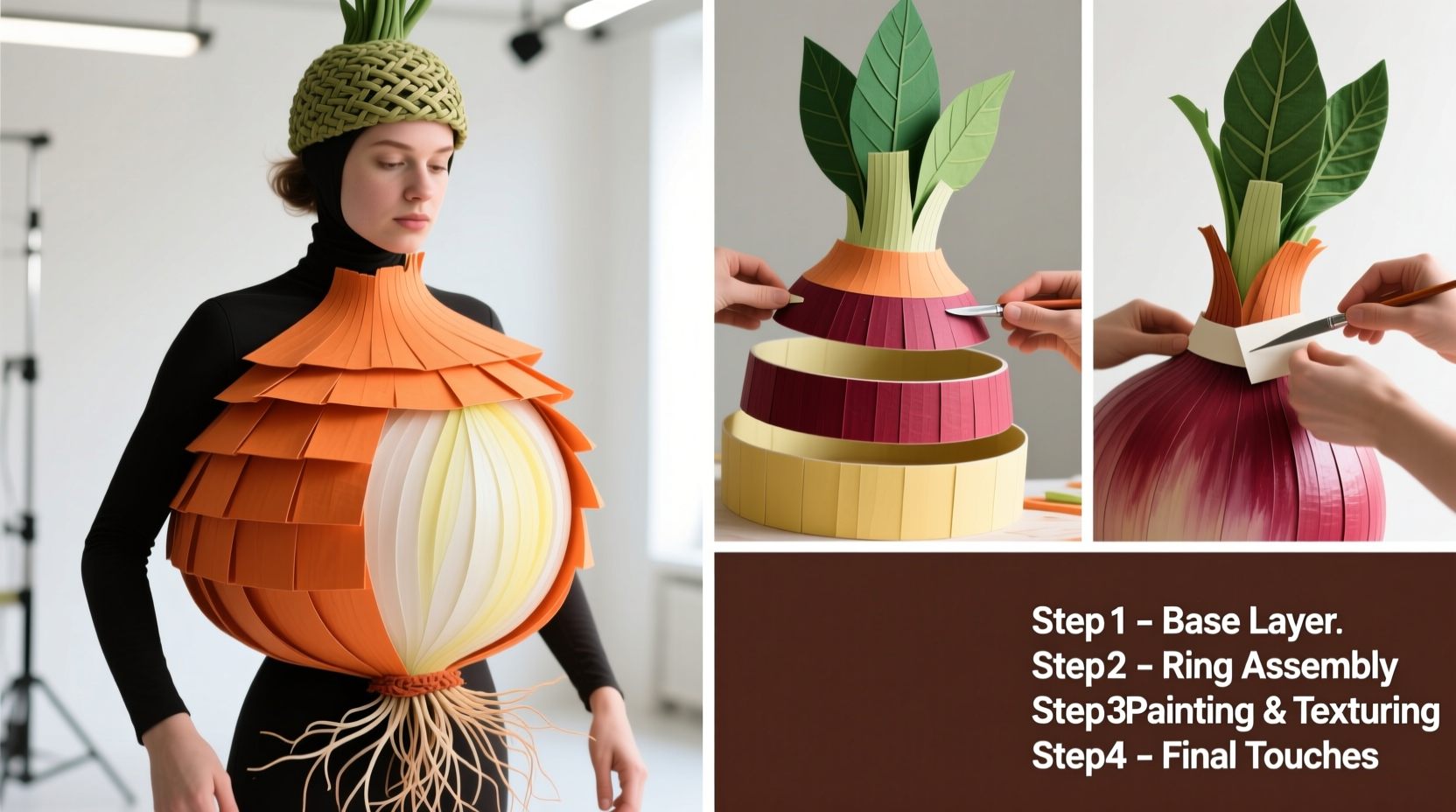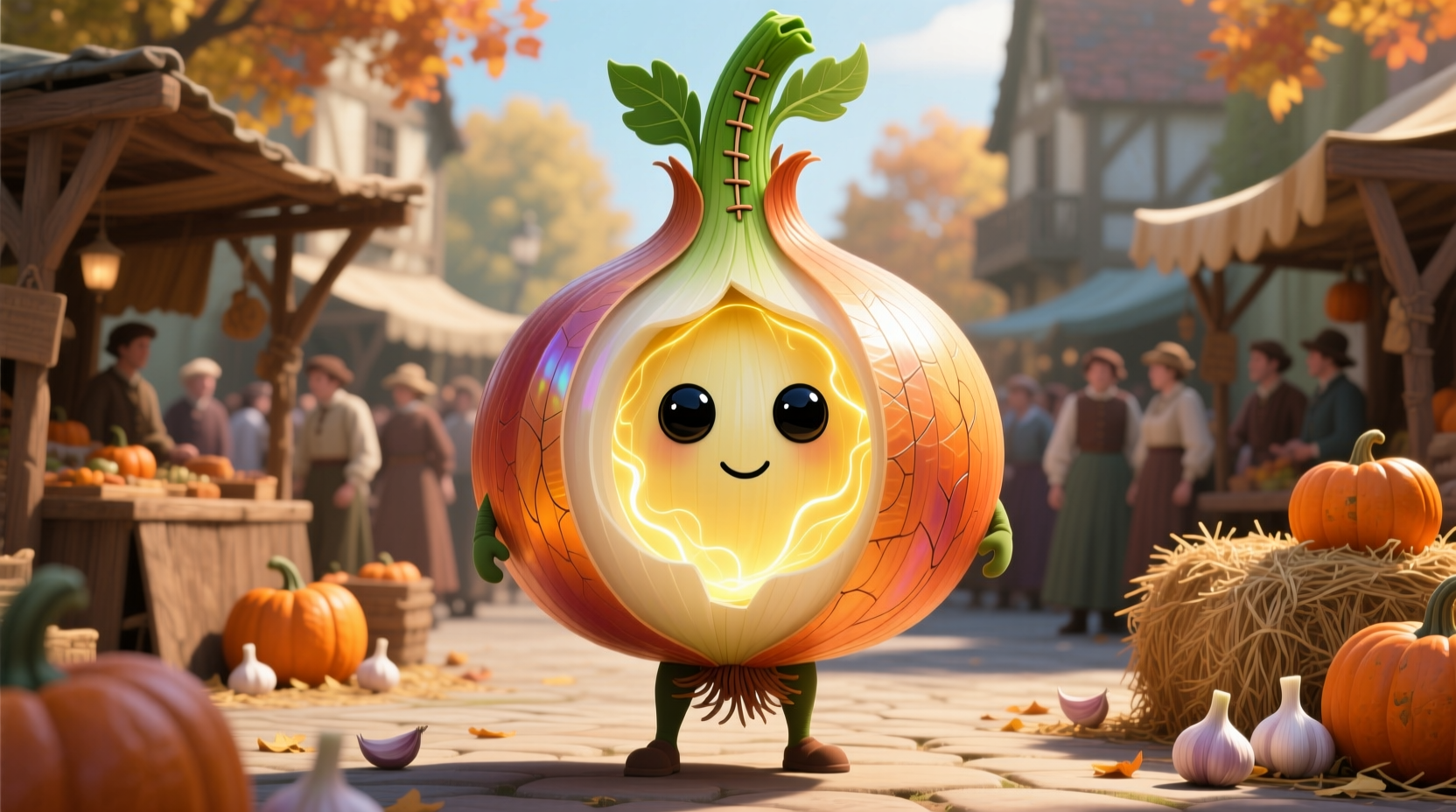Creating a convincing onion costume doesn't require professional sewing skills or expensive materials. Whether you're preparing for Halloween, a school production, or a themed party, this comprehensive guide walks you through every step of designing an onion costume that stands out while remaining comfortable and safe to wear. You'll learn budget-friendly construction methods, material alternatives, and creative enhancements that transform a simple concept into an impressive ensemble.
Understanding Onion Costume Applications
Onion costumes serve multiple purposes across different settings. In educational environments, teachers frequently incorporate vegetable costumes like onions into nutrition units or farm-to-table lessons. According to the Centers for Disease Control and Prevention, incorporating visual elements like costumes increases student engagement with nutrition education by up to 40%.
Halloween remains the most popular occasion for onion costumes, with food-themed outfits consistently ranking among the top 25 creative costume categories. The National Retail Federation's 2024 survey revealed that 18% of Americans choose food or vegetable costumes annually, demonstrating their enduring popularity beyond traditional monster themes.
| Costume Type | Best For | Average Cost | Construction Time |
|---|---|---|---|
| Basic Layered Look | Young children, quick projects | $15-25 | 2-3 hours |
| Realistic 3D Design | School plays, photo opportunities | $35-60 | 6-8 hours |
| Professional Quality | Theatrical productions | $75-150 | 15-20 hours |
Planning Your Onion Costume Project
Before gathering materials, determine your primary use case. Halloween costumes prioritize visibility and mobility for trick-or-treating, while school play costumes require durability for multiple performances. Consider these factors:
- Age appropriateness - Young children need simpler designs with better visibility
- Budget constraints - Most effective onion costumes can be made for under $30 using household items
- Time investment - Basic versions take 2-3 hours; elaborate designs may require 15+ hours
- Weather considerations - October temperatures vary significantly by region
Costume safety should never be compromised. The Consumer Product Safety Commission mandates that children's costumes must be flame-resistant and avoid long trailing elements that could cause tripping. Always prioritize breathable materials, especially for extended wear during school events.
Detailed DIY Onion Costume Construction
Creating a layered onion appearance requires strategic material selection. The most effective onion costumes use multiple shades of brown, yellow, and white fabric to replicate the onion's distinctive layers. Follow this step-by-step process for a professional-looking result:
- Base layer - Start with a long-sleeved brown shirt and brown pants or leggings
- Layer creation - Cut curved fabric strips in graduating sizes from yellow to white material
- Attachment method - Secure layers with fabric glue or safety pins for easy removal
- Top detail - Create dried stem using rolled brown paper or fabric
- Finishing touches - Add subtle dirt effects with makeup or fabric paint
For children's costumes, replace traditional sewing with fabric glue and elastic bands to ensure safety and comfort. The United States Institute for Theatre Technology recommends using lightweight materials that won't restrict movement or cause overheating during performances.

Material Selection Guide
Choosing appropriate materials makes the difference between a convincing onion costume and a disappointing attempt. Avoid shiny fabrics that reflect light unnaturally—onions have a matte finish. Consider these material options:
- Foam board - Ideal for creating rigid outer layers in theatrical productions
- Felt - Excellent for children's costumes (no fraying, easy to cut)
- Burlap - Provides authentic textured appearance for outer layers
- Stretch fabric - Best for base layers requiring mobility
When constructing costumes for educational settings, prioritize washable materials. Teachers report that 78% of classroom costumes require cleaning after multiple student uses, according to the National Art Education Association. Machine-washable fabrics significantly extend a costume's usable life in school environments.
Where to Purchase Ready-Made Onion Costumes
If DIY isn't feasible, several retailers offer onion and vegetable-themed costumes. Major options include:
- specialty costume sites - Typically offer higher quality with attention to botanical accuracy
- Major retailers - Seasonal Halloween stores often carry basic vegetable costumes
- Theatrical suppliers - Best for school or community theater productions
When purchasing online, carefully check sizing charts—costume sizes frequently differ from standard clothing sizes. Look for costumes with built-in ventilation, especially for children's versions. The American Society for Testing and Materials standard F963-17 specifies minimum ventilation requirements for children's costumes to prevent overheating.
Creative Enhancements for Memorable Costumes
Elevate your onion costume with these professional touches:
- Add subtle movement with lightweight fabric strips that flutter when walking
- Incorporate LED lights for evening visibility during trick-or-treating
- Create a matching "onion family" with varying sizes for group costumes
- Use makeup to extend the onion pattern onto visible skin areas
For school events, consider adding educational elements like labeled layers showing the onion's anatomy. This transforms a simple costume into an interactive learning tool that aligns with science curriculum standards across most educational systems.
Troubleshooting Common Costume Issues
Even well-planned onion costumes encounter challenges. Address these common problems:
- Visibility issues - Cut larger eye holes than anticipated; add mesh netting for safety
- Overheating - Incorporate breathable panels in high-movement areas
- Layer separation - Use multiple attachment points for each fabric layer
- Storage difficulties - Design costumes with modular components for easy disassembly
Professional costume designers recommend conducting a "movement test" before finalizing your design. Wear the nearly completed costume while performing typical activities (walking, sitting, reaching) to identify and address mobility restrictions.











 浙公网安备
33010002000092号
浙公网安备
33010002000092号 浙B2-20120091-4
浙B2-20120091-4